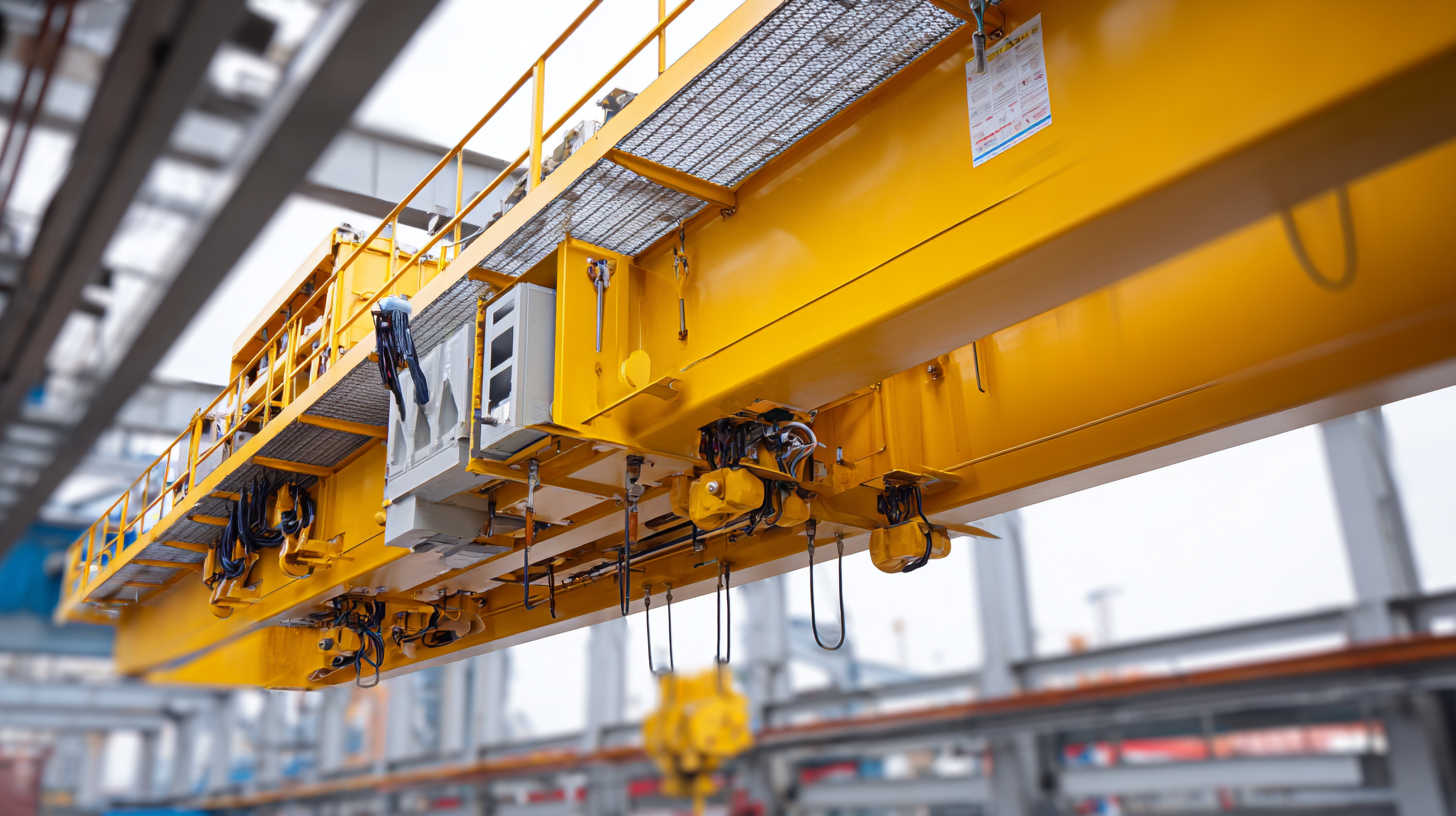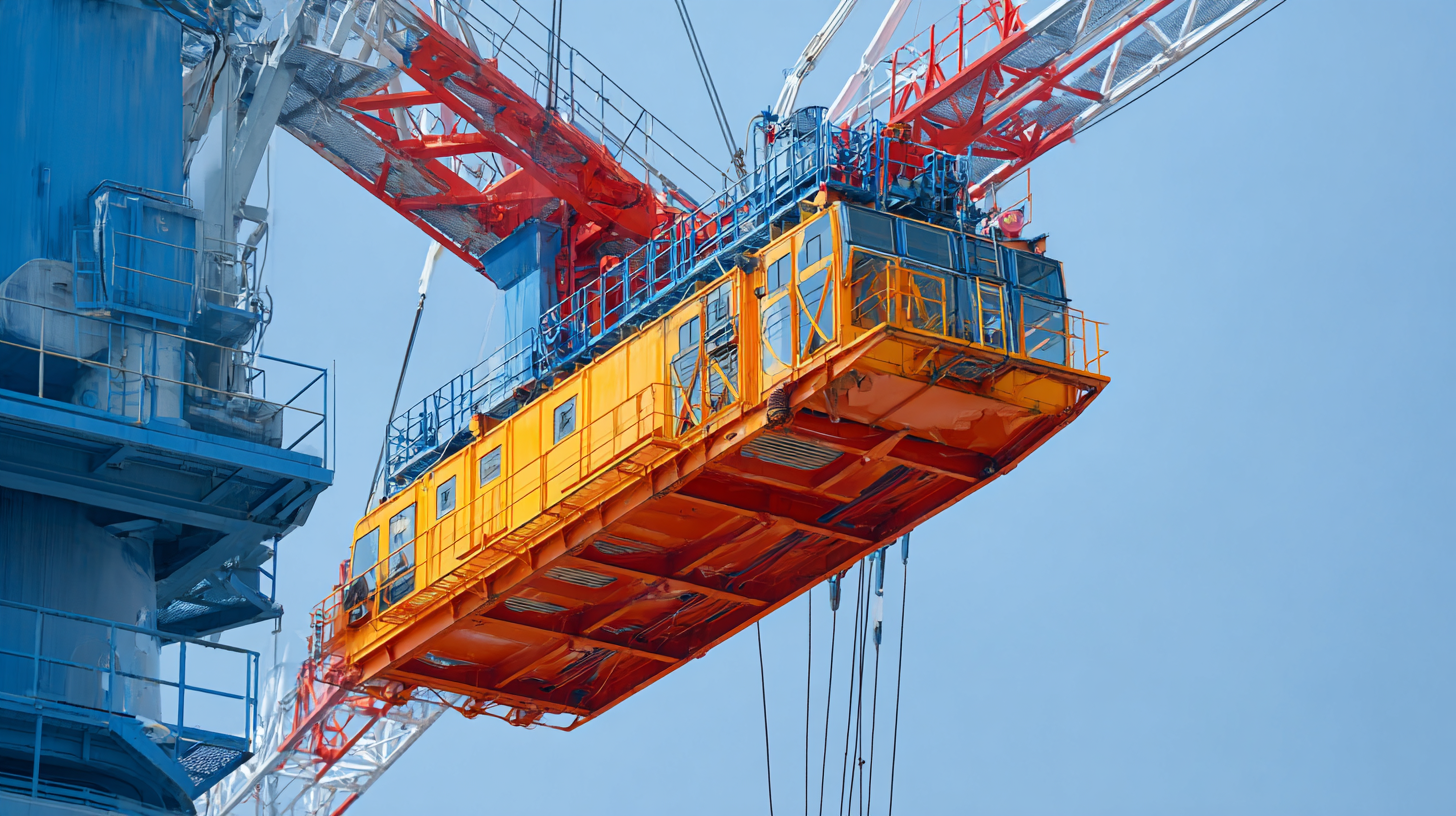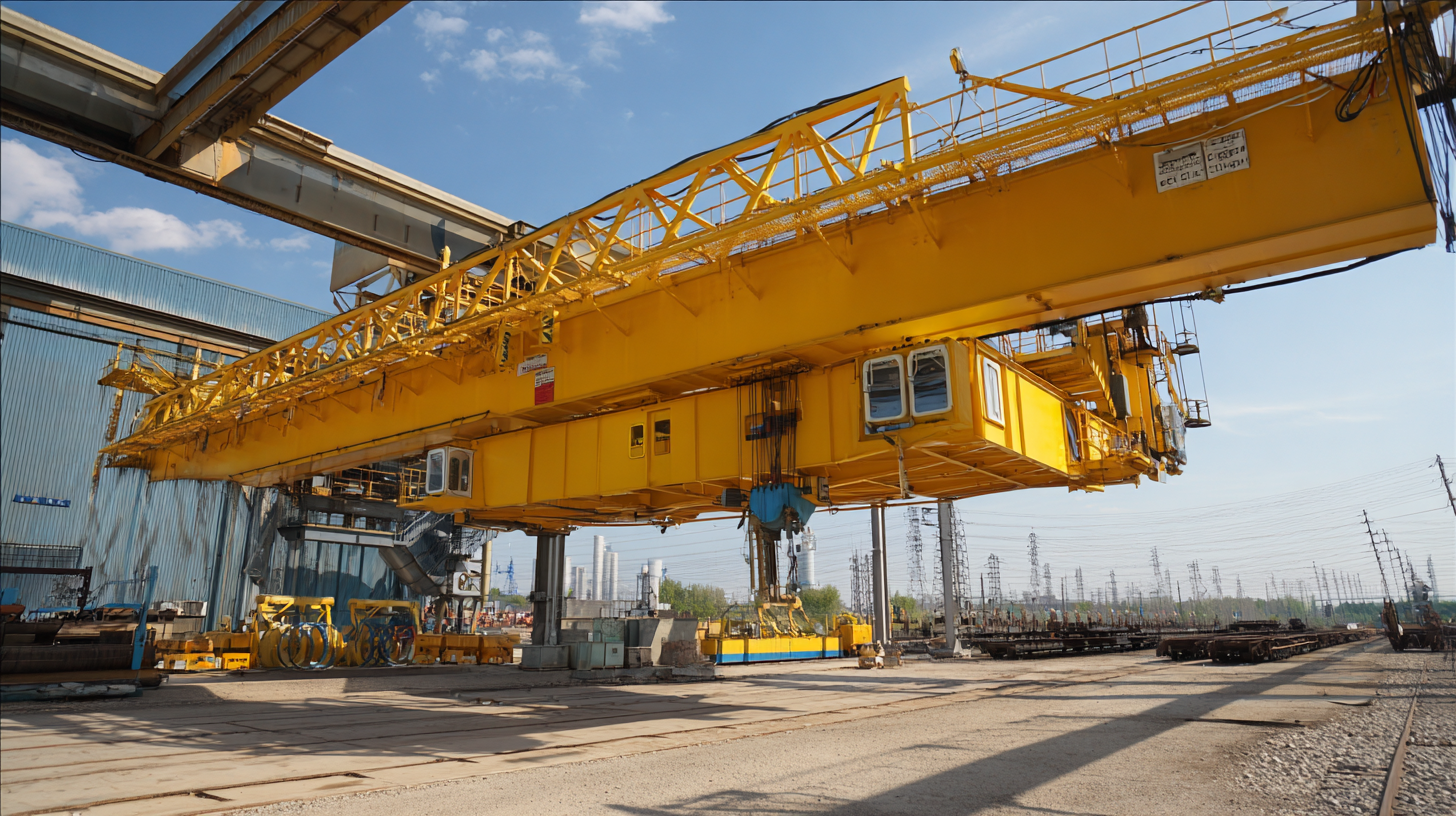Future-Proofing Your Operations: 2025 Tech Trends & Effective Strategies for Best Overhead Bridge Crane Usage
In an era where technological advancements are reshaping industrial operations, understanding and adapting to emerging trends is crucial for maximizing efficiency and performance. As we approach 2025, the landscape of operational technology will continue to evolve, influencing how businesses utilize equipment such as the Overhead Bridge Crane. This versatile piece of machinery is integral to various industries, facilitating seamless material handling and improving productivity. To stay ahead of the curve, it's essential to not only recognize these tech trends but also to implement effective strategies that ensure optimal usage of overhead cranes. In this blog, we will explore the key trends set to impact operations in the coming years and provide insight into best practices for harnessing the full potential of Overhead Bridge Cranes, ensuring that your operations remain efficient and future-proof.

Emerging Technologies Shaping Overhead Bridge Crane Operations in 2025
As we look towards 2025, the overhead bridge crane operations are set to undergo significant transformations driven by emerging technologies. The rise of automation and smart technologies is making it possible for cranes to operate more efficiently and safely. Remote controlling options, augmented reality for maintenance inspections, and real-time data analytics are becoming integral to the operational framework. This transition not only increases the productivity of lifting operations but also minimizes human error, thereby enhancing overall safety.
Furthermore, advancements in robotics and AI are revolutionizing how cranes are integrated into logistic processes. The implementation of advanced sensors and IoT technology allows for better tracking and forecasting of material handling needs. Companies that adapt these technologies will undeniably see a competitive edge as they streamline operations and reduce overhead costs. The synergy between manual control and automated systems signifies a monumental shift that will define the future of crane operations, leading towards smarter, safer, and more efficient work environments.
Strategies for Maximizing Efficiency with Advanced Crane Systems
As industries evolve, the role of overhead bridge cranes becomes increasingly vital for operational efficiency. To maximize this potential, businesses must adopt advanced crane systems that not only enhance productivity but also ensure safety. One effective strategy involves leveraging smart technology, such as IoT sensors and automated controls, which provide real-time data on load weights and operational conditions. This integration allows for predictive maintenance, minimizing unexpected downtimes and optimizing the overall workflow.
Additionally, training staff on the latest operating procedures and safety protocols can dramatically improve the efficiency of crane usage. Implementing simulation-based training programs helps operators hone their skills in a risk-free environment, enabling them to respond adeptly to various scenarios encountered on the job. Coupled with regular safety audits and compliance checks, this proactive approach fosters a culture of safety and efficiency, ensuring that crane operations align with best practices in the industry. By focusing on these strategies, businesses can future-proof their operations and make the most of their overhead bridge cranes.
The Role of Data Analytics in Enhancing Crane Performance
In the fast-evolving landscape of industrial operations, the role of data analytics has become an indispensable asset in enhancing overhead bridge crane performance. By harnessing the power of big data, companies can gain invaluable insights into their crane operations, optimizing performance, reducing downtime, and improving safety standards. Through continuous monitoring and analysis of crane metrics—from load weights to operating speeds—operators can predict maintenance needs before issues arise, enabling proactive interventions that minimize disruptions and extend equipment lifespans.

Moreover, integrating data analytics with IoT technology transforms traditional overhead crane systems into smart machines. Real-time data collection facilitates advanced reporting and visualization capabilities, allowing for nuanced decision-making. Operators can identify patterns and performance anomalies through comprehensive dashboards, optimizing usage efficiency and training staff for better operational practices. This data-driven approach not only heightens crane reliability but also contributes to overall operational excellence, ensuring that businesses stay competitive in the industrial sector as they prepare for future challenges.
Integrating Robotics for Smarter Overhead Bridge Crane Usage
As industries strive for efficiency and safety, integrating robotics into overhead bridge crane systems gains significant traction. Recent studies indicate that the global industrial robotics market is projected to reach $70 billion by 2025, showcasing a trend towards automating material handling processes, including crane operations. By employing robotic systems alongside overhead bridge cranes, companies can reduce manual labor, minimize human error, and enhance operational safety. For instance, collaborative robots, or cobots, can assist in controlling crane movements seamlessly, allowing for smoother operations and improved load management.
Moreover, the adoption of smart sensors and IoT technology in conjunction with robotic systems provides critical real-time data on crane performance and load conditions. According to a report by MarketsandMarkets, the IoT in manufacturing is expected to reach $70 billion by 2025, emphasizing the importance of data-driven decision-making. This integration allows for predictive maintenance, reducing downtime and optimizing productivity. By harnessing these advancements, businesses can future-proof their operations and ensure that they remain competitive in an increasingly automated landscape.
Future-Proofing Your Operations: 2025 Tech Trends & Effective Strategies for Best Overhead Bridge Crane Usage - Integrating Robotics for Smarter Overhead Bridge Crane Usage
| Trend/Strategy | Description | Expected Impact | Implementation Ease | Integration with Robotics |
|---|---|---|---|---|
| Automation | Implementing automated systems to reduce manual operations. | Increased efficiency and safety. | Moderate | High |
| Data Analytics | Using analytics to monitor and optimize crane performance. | Enhanced decision-making. | High | Medium |
| IoT Integration | Connecting cranes to IoT for real-time monitoring. | Improved uptime and maintenance. | Moderate | High |
| Predictive Maintenance | Using sensors to predict and prevent equipment failure. | Cost reduction through minimized downtime. | High | Medium |
| Robotic Assistance | Integrating robots to assist with heavy lifting and navigation. | Enhanced safety and operational capabilities. | Low | Very High |
Safety Innovations to Consider for Future-Proof Operations
As industries gear up for 2025, the emphasis on safety innovations in overhead bridge crane operations becomes paramount. With advancements in technology, organizations must adopt a proactive approach to ensure worker safety and operational efficiency. The recent report by the China Information Communication Research Institute highlighted that data security innovations are projected to evolve with three new characteristics by 2025, underscoring the need for industries to invest in secure operational frameworks. By integrating cutting-edge safety technologies, organizations can minimize risks associated with overhead crane usage, ultimately leading to safer workplaces.
Moreover, the expansion of AI and data technologies necessitates a reevaluation of safety protocols. With data centers and automation growing rapidly, the integration of AI-driven monitoring can enhance real-time decision-making and safety assessments. The need for a multi-layered security approach is emphasized in the latest industry observations, indicating that organizations should incorporate automated safety measures alongside their traditional practices. Emphasizing these innovations will not only address current safety concerns but also future-proof operations against the evolving landscape of 2025.

